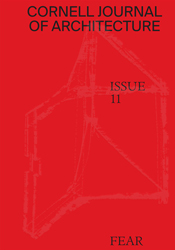Ryan: And Beirut, doctor? Here you’re keeping an eye on another virus?
(…)
Doctor: …Not a physical virus, but a psychological one even more dangerous than smallpox…We need to know how we can manipulate their emotions, how we can twist the news and trigger off their aggressive drives, how we can play on their religious feelings or political ideals.
—J.G. Ballard, War Fever, 1990.
The war-torn structures of Beirut, Lebanon remain caught between a repressed narrative and a symbolic presence within the city. In the years following the Lebanese Civil War of 1975–1990, Beirut found itself saturated in multiple conflicting narratives resulting in a convoluted reading of its recent past. During this period, the conspiracy theory emerged as a repressed social text while the rifle represented a populous war object. Both dangerous and imbued with contradictory meanings, the conspiracy theory and the rifle shifted between the symbolic and the real. While a conspiracy theory represents both a theory and a fictional story, a rifle symbolizes a neutral order and a deadly disorder. Associations such as fear and control further alter the definition of a rifle and a conspiracy theory. The rifle, in its holistic form, evokes fear, but its meaning dissipates once disassembled. Conversely, a conspiracy theory gains control of reality by extracting semiotic codes for fictitious texts and alternative meanings.
During the Civil War, the distribution of warfare weapons and their ease of retrieval from foreign political alliances reshaped the city. The building became more than the sum of its architectural elements by serving as a corroborative witness to the conspiracy, an accessory to the rifle, and an active antagonist in the city. The post-war city integrates the fear of latent violence into its development, leading to a reconstruction blanketed under the guise of neutrality. By neutralizing war texts and objects, however, new meanings surface for the ruins to re-engage the people as social actors in the city. Architecture, like text and object, occupies an uncertain disjunction linking meaning and structure; [1] it defies fear as the neutralizing vessel to mediate the dialectic gap between fiction and reality.












